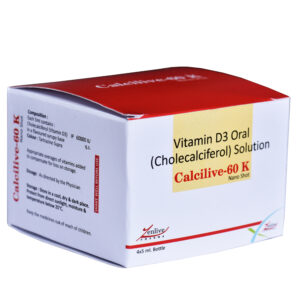Vitamin D3, also known as cholecalciferol, is an essential nutrient that plays a multifaceted role in maintaining overall health. It is primarily synthesized in the skin upon exposure to ultraviolet B (UVB) radiation from sunlight. However, due to various factors such as limited sun exposure, geographic location, and age, many individuals suffer from a deficiency in this vital nutrient.
Significance of Vitamin D3
Vitamin D3 exerts a profound influence on various bodily functions, including:
- Calcium and Phosphorus Absorption: Vitamin D3 facilitates the absorption of calcium and phosphorus from the intestines, which are crucial for bone health and preventing osteoporosis.
- Immune System Regulation: Vitamin D3 modulates the immune system, potentially reducing the risk of autoimmune diseases and enhancing the body’s defense against infections.
- Cell Growth Regulation: Vitamin D3 plays a role in regulating cell growth and differentiation, potentially lowering the risk of certain types of cancer.
- Mood Regulation: Studies suggest that vitamin D3 may have mood-boosting effects and may help alleviate symptoms of depression.
Symptoms of Vitamin D3 Deficiency
A deficiency in vitamin D3 can manifest in various symptoms, including:
- Bone Pain and Weakness: Vitamin D3 deficiency can lead to bone pain, weakness, and increased susceptibility to fractures.
- Fatigue and Muscle Aches: Fatigue, muscle aches, and general malaise are common symptoms associated with vitamin D3 deficiency.
- Impaired Immune Function: Vitamin D3 deficiency can weaken the immune system, making individuals more susceptible to infections.
- Mental Health Issues: Vitamin D3 deficiency has been linked to an increased risk of depression and other mental health disorders.
Natural Sources of Vitamin D3
Sun exposure is the primary natural source of vitamin D3. However, several factors can limit sun exposure and contribute to vitamin D3 deficiency.
Dietary Sources: Certain foods naturally contain vitamin D3, such as fatty fish (salmon, tuna, sardines), egg yolks, and fortified dairy products.
Mushrooms: Some mushrooms, such as portobello mushrooms, can synthesize vitamin D3 when exposed to UVB radiation.
Sun Exposure Guidelines
The required sun exposure time to absorb vitamin D3 depends on various factors, including skin type, latitude, time of day, and season. Generally, fair-skinned individuals living in sunny climates may need as little as 10-30 minutes of unprotected sun exposure to their face, arms, and legs two to three times per week. People with darker skin tones may require longer exposure times, up to an hour or more.
Optimizing Sun Exposure for Vitamin D3 Absorption
To maximize vitamin D3 absorption from sun exposure, follow these tips:
- Expose bare skin: Expose more of your skin to the sun, such as your arms, legs, and back.
- Avoid sunscreen: While sunscreen is crucial for protecting against skin cancer, it can block UVB rays and hinder vitamin D3 synthesis. If you do use sunscreen, choose a low-SPF option and apply it after you’ve had some unprotected sun exposure.
- Consider the time of day: UVB rays are strongest between 10 am and 4 pm, so aim for sun exposure during these hours.
- Be mindful of your location: If you live in a northern latitude or during the winter months, you may need more sun exposure to get enough vitamin D3.
Remember, excessive sun exposure can lead to sunburn and skin damage, so it’s essential to practice sun safety. If you have concerns about your vitamin D3 levels, consult with your doctor. They can assess your individual needs and recommend appropriate supplementation if necessary.
Comparison of Vitamin D3 Supplementation Forms
Overall, nano shots are the most bioavailable form of vitamin D3, followed by granules and then tablets. However, the bioavailability of any form of vitamin D3 can be affected by individual factors such as age, genetics, and gut health.
Here is a summary of the key points of the comparison:
- Nano shots:
- Highest bioavailability
- Highly absorbed
- Convenient and portable
- May have higher risk of side effects at high doses
- Can be more expensive
- Tablets:
- Moderate bioavailability
- Moderately absorbed
- Easy to store and transport
- Generally well-tolerated
- Affordable
- Granules:
- Moderate to high bioavailability
- Moderately to highly absorbed
- Can be mixed with food or beverages
- Generally well-tolerated
- Less expensive than nano shots
It is important to note that these are just general guidelines, and the actual bioavailability of each form of vitamin D3 may vary depending on the individual product. If you are considering taking vitamin D3 supplements, it is always best to consult with your doctor to determine the best form and dosage for you.









